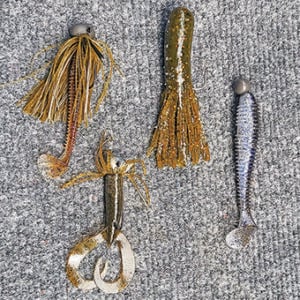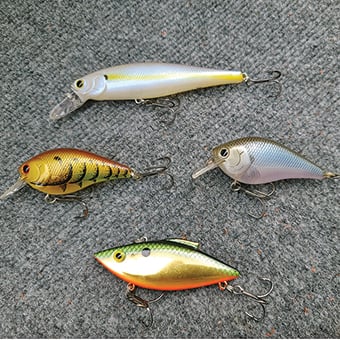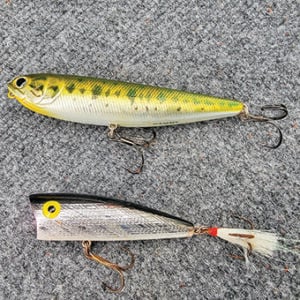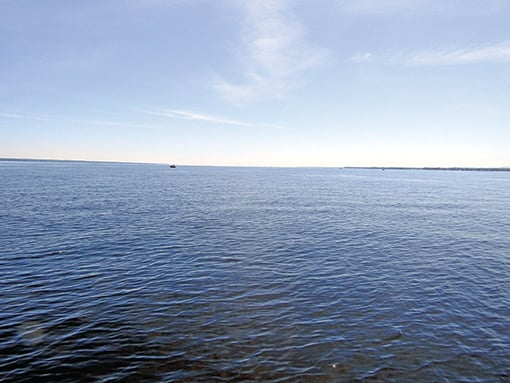Lake Ontario’s Eastern Basin offers a premier smallmouth fishery; here’s how to catch them – Outdoor News
National bass tournament trails laud Lake Ontario and the St. Lawrence River as the premiere smallmouth destination in the country, and for good reason. These professionals come to northern New York and with a mere two-to-three days of practice proceeding a tournament and they manage to find bass and bring in five-fish daily limits that average 25 pounds.
The good news is that you don’t have to be a professional angler to enjoy these fish. Simply consider location, seasonal movement patterns and presentation.
From around the June 15 opener on through July the bronzebacks will be in all three spawning stages. We see pre-spawn fish, the majority will be in the full throws of the spawn, with at least 8% post spawn, according to recent NY Department of Environmental Conservation briefings.
Going horizontal
Keep in mind there are usually two groups of smallmouths, the local resident fish that stay shallow all season long, and another group that come shallow to spawn, then move offshore right after the spawn.
In either case, both groups of fish are ravenous post-spawn eaters and horizontal lures allow you to find them quickly in the shallows. Rattle-traps, topwater, jerkbaits, square-bill crankbaits, spinnerbaits, chatterbaits and swimbaits are all great choices.
Employ these baits in waters of 10 feet or less around any sandy or hard rock rubble bottom and if the area hosts scattered weeds mixed in, then all the better.
Horizontal lures provide the opportunity to cover massive amounts of water while searching for a hook-up and they will force a feisty smallmouth to tell on itself. Often when you hook a bass it will have two or more follow it to the boat, or you will see the fish follow the lure in and turn away at the last second without striking the bait, hence telling on itself, letting you know you are in the right area.
Followers

If you find you are generating more follows than bites, then it is time for a change.
Try employing a tube lure, a wacky rigged Senko worm or a marabou hair jig. There is a school of thought for followers, which suggests you should change the sizes or colors of the lure that just got the follow.
I too used to go through that process, then about six years ago I decided to simply give following fish an extremely easy target to hit. Something that falls right in their face. The tube lure, Ned bait or wacky rigged Senko worm are the simplest lures to employ in this given scenario.
Once I see the follower turn away, I will grab the tube, Ned or Senko and fire a cast out about 20-yards ahead in the same general direction that I saw the fish swim toward. I estimate 85-to-90% of the time this results in a quality bite.
Another presentation for this follower scenario is the drop-shot, with a 3- to 4-inch worm. For all these lures, tube, Ned, Senko or drop-shot usually some variation of a green pumpkin color is a reliable option.
Braid, mono & floro
As the sun gets higher in these gin clear waters and the wind subsides, oftentimes residents will hold tighter to the bottom or move just a bit deeper. They will not go far from where you found them earlier in the day, but they will seek a bit deeper water for security.
Remember if you can see 15-foot into the water, the fish can easily see twice that distance so longer casts are your friend.
For the past 10 years I have switched exclusively to fishing with Cortland Masterbraid. It is a small diameter no stretch line that allows for distance casting while providing rock solid hook-sets at distance, versus monofilament line which has 1-inch stretch for every 36-inches of line.
MORE BASS COVERAGE FROM OUTDOOR NEWS:
Nearly 61-pound striped bass is biggest in tournament history at New York’s 23rd Manhattan Cup
Bass, muskies and perch fishing to hit prime in Michigan’s warming waters during July
Michigan’s Keweenaw Peninsula is an untapped gem for smallmouth
Imagine making a cast of 30- to 40-yards with monofilament, you get a bite and set the hook, and your line is going to stretch about 10 to 14-inches before you drive the hook into the fish. With braided line you get zero stretch and instantaneous hook-sets.
For most horizontal applications I tie the Masterbraid directly to the lure, because the bait is in continual motion, and the fish does not have time to really see the line.
However, the opposite is true with vertical presentations, and I will add a 30- to 40-inch section of Cortland Top Secret fluorocarbon line. That line is designed as a fly-fishing tippet material that is 33% smaller in diameter than any other fluorocarbon available.
Open water
The deep/open water smallmouth are another animal all together.
These fish can be found in larger schools on offshore shoals or humps any where from 20- to 45-foot or deeper. They will feed on gobies and crawfish and chase the alewives. The open water offshore smallies can present a challenge and over the past four years the anglers employing Forward Facing Sonar (FFS), are learning increasingly more about them. However, our focus is on traditional deep-water smallmouth presentations.

When scouting for offshore smallmouths I look for rock piles on underwater humps or shoals, ledges, and cuts along the sides of those humps, any irregularity on the bottom. These areas often have sand grass scattered around the rocks and that’s always a plus. In the Eastern Basin, my summertime off-shore bass fishing is in the 20- to 32-foot zone employing a swimbait, drop-shot or a football jig.
With all three presentations I employ a 3⁄8-ounce weight or jig-head. With the swimbait I recommend a 4-inch version, like a Keitech Easy Shiner or 3.8 Fat Swing Impact.
Cast it out, let it fall all the way to the bottom, then begin a slow steady retrieve. The goal is to keep the bait just over the bottom, slightly tapping the rocks or weeds during the retrieve. If you find the lure is coming in with any weed or green slime on it, then speed up your retrieve just a bit, but not too fast, you want that lure near the bottom throughout the retrieve.
For the drop-shot and the football jig I keep it simple, cast it out, once it hits bottom, I begin a painfully slow retrieve by cranking the reel. Try not to employ any rod action whatsoever.
My goal with this slow retrieve is to feel the football jig or the drop-shot weight just crawl along as it maintains bottom contact throughout the retrieve and the Masterbraid does an excellent job of telling you every time the weight / jig contacts anything on the bottom.
The football jig just crawls ever so slowly along replicating a crawfish or goby, and when you get a bite there is no doubt about it.
The drop-shot weight does much the same and because the hook and worm are tied 24-inches above the weight, every time the weight hits an object or bounces over something it makes that worm wiggle. This style of drop-shot fishing in deep water is not casting out and jiggling the rod to give the worm action, instead all the action in the worm is generated when the weight is pulled into or over something.
An all-day plan
You do not have to be an expert angler to use these two deep water presentations. When done correctly, it requires the angler to cast out, let the lure fall to the bottom then begin a terribly slow, but steady retrieve. From the seasoned angler to the novice, this slow deepwater retrieve will help you put more fish in the boat.
Remember to follow the sun and follow the fish as they react to the sun. Start with topwater from daybreak until around 8:30 a.m. or so, then from 9 to 11 a.m. I employ mid-depth lures that run 3- to 8-fee down. Then from noon until around 4 p.m, I will fish deeper, with swimbaits, crankbaits, a dropshot or jigs and that formula has served me well for years.
Top-water

Another overlooked offshore presentation is a topwater, cigar style bait, like the Lucky Craft Sammy or chugger style like the Pop-R.
These baits work best in flat waters, and they can call a fish to them from distances of 20-feet or more. The interesting and often overlooked thing about topwater lures is this: any bait on top has already lost 50% of its escape route, thereby making it a much easier meal to catch. The bass know this and will take full advantage of that opportunity.
I have enjoyed a solid top-water bite casting to open water fish at high noon, so do not think this is just a low light period presentation. I fish these presentations using a 7-foot medium power fast action rod (baitcaster or spinning), the reels are spooled with 8-or 10-pound Masterbraid and it works well.
The Eastern Basin of Lake Ontario is big water that provides big opportunities, but it requires sound and prudent judgment. Be safe, and most of all, just have fun, and get out there and sample this big water bass factory.
Hopefully, this information will help you catch your next trophy smallmouth.
A licensed U.S. Coast Guard Captain, Burnie Haney owns New York Fishing Adventures and is a regular contributor to NYON’s fishing reports.







